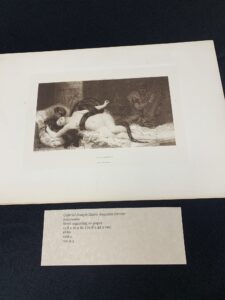Quote in title can be found on pg. 158 of “A Woman In White” and is said by Mr. Fairlie when describing his servant Louis.
The Victorian age was filled with the anxiety to define gender in a legal and economic sense, but also to define its “very nature” (Norton 992). Accordingly, it is impossible to understand Victorian gender without accounting for the role of class and employment. By using the analysis of class provided in the Norton Anthology, I will attempt to analyze Greg’s “Why Are Women Redundant?” with a special focus on the gendering of the female servant class. Once the servant class’s particular position is clear, it becomes easier to understand the role of economics in the shifting and fluid boundaries of all Victorian genders.
In the Norton Anthology, the authors illustrate the limited employment opportunities for middle-class women. They argue the most socially acceptable job that afforded a claim to gentility was working as a governess (Norton 992). When explaining the difficulties such a position presented, including limited pay and poor job security, the authors make a powerful conclusion. Women employed as governesses had an “ambiguous status, somewhere between servant and family member,” (Norton 992).
In Greg’s “Why Are Women Redundant?” he rants and raves about the dangers unmarried women have to Victorian society. He argues in favor of a balance of genders, in accordance with the ‘natural law’ (Greg 160). While he has many choice words for unmarried women, he makes certain to state that “female servants do not constitute any part of the problem we are endeavouring to solve,” (Greg 161). This is because he believes they serve the greater good of society – “they are supported by, and they minister to, men,” (Greg 161).
By putting these texts in conversation with each other, I aim to reveal what Greg refuses to say plainly. According to Victorian definitions of gender, female servants were not women – they were a different gender entirely. While the Norton Anthology speaks to governesses particularly, which are figured a step above servants, I believe their concept of “ambiguity” can be extended to female servants too. Victorian women were defined by their roles as mothers, wives, and sisters – without these identities, it becomes difficult to identify their class, role in society, and right to property. Female servants were often unmarried, hold no property, and rarely had familial ties visible in their workplace. But they served miscellaneous female roles, and as Greg says, “fulfil [the] essentials of woman’s being” hence their ambiguity (Greg 161). They just reached the threshold of womanhood, but their class denied them the full privileges of being respected as a woman. If they were, they’d be seen as more sensitive, soft, and in need of protecting; and further, been viable marriage options for men of all classes. They were decidedly not. That being said, according to Greg, they were respected on the basis of being useful as opposed to independent unmarried women (Greg 161).
Based on Greg’s angry tirade, I propose a concept of Victorian female gender hierarchy which follows the conventional (upper, middle, lower) class, but accounts for marriage and servant/served status. Gender and class were not separate things, but directly linked. As Greg says, female servants were not automatically beneath all other women, as an understanding of class may lead you to believe. In fact, being employed as a servant probably allowed many queer people to continue their relationships and unconventional familial structures.


